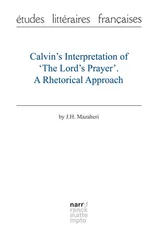Helge Fauskanger - J.R.R. Tolkien’s Lord’s prayer and Hail Mary in Quenya - Syntactical and Etymological Analysis
Здесь есть возможность читать онлайн «Helge Fauskanger - J.R.R. Tolkien’s Lord’s prayer and Hail Mary in Quenya - Syntactical and Etymological Analysis» весь текст электронной книги совершенно бесплатно (целиком полную версию без сокращений). В некоторых случаях можно слушать аудио, скачать через торрент в формате fb2 и присутствует краткое содержание. Жанр: Языкознание, на английском языке. Описание произведения, (предисловие) а так же отзывы посетителей доступны на портале библиотеки ЛибКат.
- Название:J.R.R. Tolkien’s Lord’s prayer and Hail Mary in Quenya: Syntactical and Etymological Analysis
- Автор:
- Жанр:
- Год:неизвестен
- ISBN:нет данных
- Рейтинг книги:5 / 5. Голосов: 1
-
Избранное:Добавить в избранное
- Отзывы:
-
Ваша оценка:
- 100
- 1
- 2
- 3
- 4
- 5
J.R.R. Tolkien’s Lord’s prayer and Hail Mary in Quenya: Syntactical and Etymological Analysis: краткое содержание, описание и аннотация
Предлагаем к чтению аннотацию, описание, краткое содержание или предисловие (зависит от того, что написал сам автор книги «J.R.R. Tolkien’s Lord’s prayer and Hail Mary in Quenya: Syntactical and Etymological Analysis»). Если вы не нашли необходимую информацию о книге — напишите в комментариях, мы постараемся отыскать её.
J.R.R. Tolkien’s Lord’s prayer and Hail Mary in Quenya: Syntactical and Etymological Analysis — читать онлайн бесплатно полную книгу (весь текст) целиком
Ниже представлен текст книги, разбитый по страницам. Система сохранения места последней прочитанной страницы, позволяет с удобством читать онлайн бесплатно книгу «J.R.R. Tolkien’s Lord’s prayer and Hail Mary in Quenya: Syntactical and Etymological Analysis», без необходимости каждый раз заново искать на чём Вы остановились. Поставьте закладку, и сможете в любой момент перейти на страницу, на которой закончили чтение.
Интервал:
Закладка:
The wishing-particle naopens up certain vistas of expression that the formerly known particle naidoes not cover. In all known examples, naiexpresses a wish that is to be fulfilled in the future , and that only involves what a subject hopefully is to do to an object: Nai hiruvalyë Valimar! Be it [that] thou wilt find Valimar! (Namárië), nai tiruvantes *may they keep it! (Cirion’s Oath). While this remains an important Quenya wishing-formula, the particle nais more flexible. It can be used to connect adjectives and nouns ( na aire esselya, hallowed be thy name or literally * wish-that holy [is] thy name ). (Presumably this could also be expressed as * nai nauva esselya aire, but this would place the fulfillment of the wish in the future.) Nacan be used in the case of a wish regarding what a subject hopefully is to do in the future, but no object needs to be involved: Aranielya na tuluva thy kingdom come or wish that thy kingdom will come (reworked from the declarative statement * aranielya tuluva thy kingdom will come simply by inserting the wishing-particle in front of the verb). This could probably also have been expressed by means of the "traditional" formula * nai aranielya tuluva(though all attested examples of this formula involves an object and not only a subject). Of particular interest is the peculiar construction na care indómelya, apparently * wish-that [one] does thy will . Not only does this show that nacan be used with other tenses than the future ( carelooks like an aorist) – it also indicates that this formula can be used to express a wish about what is to be done to an object without actually mentioning any subject. In effect we have a passive of sorts.
The form aistanafor blessed seems to tell us that though "derived" verbs, or A-stem verbs, normally form their past participles in - ina(as in hastaina marred , MR:254, 408), the shorter ending - namay be preferred when the resulting form would otherwise come to have the diphthong aiin two concomitant syllables: hence not ** aistaina. (Other verbs for which this may be relevant include laita- bless , praise , naina- lament , taita- prolong , vaita- wrap : past participles * laitana, * nainana[?], * taitana, * vaitana. A few other verbs containing ai, like faina- emit light , seem by their meanings to be intransitive and could probably not have meaningful past participles.) – As for the verb that underlies the form aistana, sc. # aista- to bless , it seems to supersede aista- to dread in the Etymologies (LR:358 s.v. gáyas-), though as we have argued above, the ultimate derivation may be much the same. For the meaning to dread writers can rather use the verb # ruk- from a post-LotR source (first person aorist in WJ:415: rukin I feel fear or horror , said to be constructed with "from" – sc. the ablative case? – of the object feared). For the meaning bless we already had laita- from the Cormallen Praise, but as we have argued, this is by its etymology rather * magnify and may often better be rendered praise (Letters:308; cf. also the corresponding verbal noun in Erulaitalë, Praise of Eru , as the name of a Númenórean festival: UT:166, 436). In a more purely "religious" meaning, bless as opposed to merely praise or magnify , # aista- must henceforth be the first choice of writers.
These texts do not provide much more information about the verb to be in Quenya (a topic writers really would like to know more about!), though it may be noted that the imperative be! seems to be na(q.v. above). If i ëa han ëadoes mean something like * who art in heaven (Eä) , or even * who art above Eä , this confirms that ëarather than náis used for is with reference to a position (cf. i or ilyë mahalmar ëa who is above all thrones in Cirion’s Oath). It is, however, interesting to see that nominal sentences with no explicit copula are apparently quite permissible and even usual: i Héru as elye the Lord [is] with thee , aistana elye blessed [art] thou , aistana i yáve mónalyo blessed [is] the fruit of thy womb .
There are also some academic (rather than "practical") lessons here. The Lord’s Prayer/Hail Mary translation demonstrates how Tolkien might "re-explain" certain forms that had been published, so that they would not conflict with linguistic revisions he had undertaken afterwards (a conflict that would have been unavoidable if he had maintained the explanation that he had originally intended). Aireis here repeatedly used for holy , and the first part of the compound airetáriin Namárië is likewise translated holy in LotR. In a much later source Tolkien however states that aireis "actually" a noun sanctity , the adjective holy being rather aira(PM:363-364). It can now be seen that this is not what he originally had in mind; when he first wrote airetárihe did intend aireto mean simply holy . What triggered the subsequent re-explanations and rationalizations may have been a post-LotR revision of the diachronic phonology (or actually the undoing of a revision that was "valid" during the final part of the period when LotR was written): When Tolkien once and for all decided that the change of primitive short *- ito Quenya - eoccurred only at the end of words and did not normally make it into other positions even by analogy, he had to face the fact that the already-published form airetárishould have been * airitári. In the related case carnemírie, Tolkien did change it to carnimíriein the revised version of LotR (1966), but airetáripersisted in this form and was later reinterpreted.
If I were to emend these texts to "final-intention" Quenya, as well as it can be approximated now and to whatever extent it even makes sense to speak of Tolkien’s "final intentions", I would alter úcarerto * úcarir(based on the late example karirin WJ:391, certainly postdating these translations); this again touches on the question of whether or not the change of final short *- ito - espread to other positions by analogy. For the same reason I would perhaps also read * apsenitinstead of apsenet. I would also change the strange plural nísi women to nissi, the form found elsewhere (including sources younger than this Hail Mary translation).
Whether we should furthermore read * Atáremmarather than Átaremma, or even Herurather than Héru, is difficult to say; such forms would at least be easier to reconcile with what has been published elsewhere [37] Apparently Tolkien also turned - mm - as a pronominal element for exclusive "we, our" into - lm -, a change that is reflected in the Second Edition of LotR: Incorporating this revision we would have to read * Átarelma , * massalma , * úcarelmar , * elmen , * firuvalme rather than Átaremma , massamma etc.
. But even so, Tolkien’s translation of the Lord’s Prayer and Hail Mary will stand as a remarkable sample of Quenya as Tolkien had come to see the High-Elven language about the time LotR was being published.
Интервал:
Закладка:
Похожие книги на «J.R.R. Tolkien’s Lord’s prayer and Hail Mary in Quenya: Syntactical and Etymological Analysis»
Представляем Вашему вниманию похожие книги на «J.R.R. Tolkien’s Lord’s prayer and Hail Mary in Quenya: Syntactical and Etymological Analysis» списком для выбора. Мы отобрали схожую по названию и смыслу литературу в надежде предоставить читателям больше вариантов отыскать новые, интересные, ещё непрочитанные произведения.
Обсуждение, отзывы о книге «J.R.R. Tolkien’s Lord’s prayer and Hail Mary in Quenya: Syntactical and Etymological Analysis» и просто собственные мнения читателей. Оставьте ваши комментарии, напишите, что Вы думаете о произведении, его смысле или главных героях. Укажите что конкретно понравилось, а что нет, и почему Вы так считаете.












